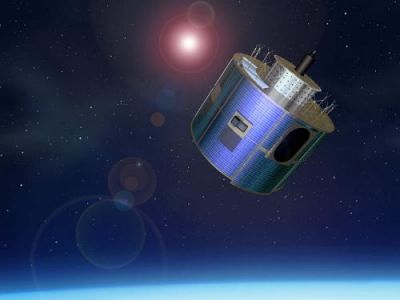The EU-funded project 'Modular CMOS photonic integrated micro-gyroscope' (MERMIG) aims to make way for extra satellite payload by replacing the bulky and heavy fibre optic gyroscope. The six academic and industrial MERMIG partners are building a micro-gyroscope that will weigh less than 1 kg and be smaller than a couple centimetres cubed to take its place.
For this new generation of micro-gyroscopes capable of withstanding the harsh environment of satellites placed in geostationary orbit, they are exploiting the latest advances in silicon nanophotonics. Specifically, complementary metal-oxide semiconductor (CMOS) technology used to integrate electronic and optical elements on the same chip is being combined with nano-imprint lithography.
MERMIG partners are adapting both technologies for space sensor systems. During the first reporting period, they squeezed the heavy and large fibre-based opticalcavity to a couple millimetres squared. All the key functionalities of an optical cavity-based sensor were integrated into a silicon photonic chip of 4.84 mm x 1 mm. In the next reporting period, the chip will be further developed to demonstrate Raman lasing.
Furthermore, MERMIG project members built a 1 550 nm laser that can deliver optical power up to 150 mW with a driving current of about 1 A. Fabricated by means of nano-imprint lithography, it is complemented by an optical fibre-based amplifier improving the output power. In a master oscillator power amplifier configuration, the laser together with the amplifier is suitable for three-axis sensing and diverse space applications.
The high-frequency noise added to the signal is so low that the new micro-gyroscope will be suitable for telecommunications as well as scientific satellites. On the other hand, it will also meet the stringent mass constraints of rovers used in planetary exploration missions. The photonic gyroscope circuits can be fabricated in high volumes at low cost with exciting prospects for the European space industry.
 EN
EN  CS
CS DE
DE ES
ES FR
FR HU
HU IT
IT PL
PL PT
PT РУ
РУ SK
SK TR
TR УК
УК AR
AR 中文
中文







